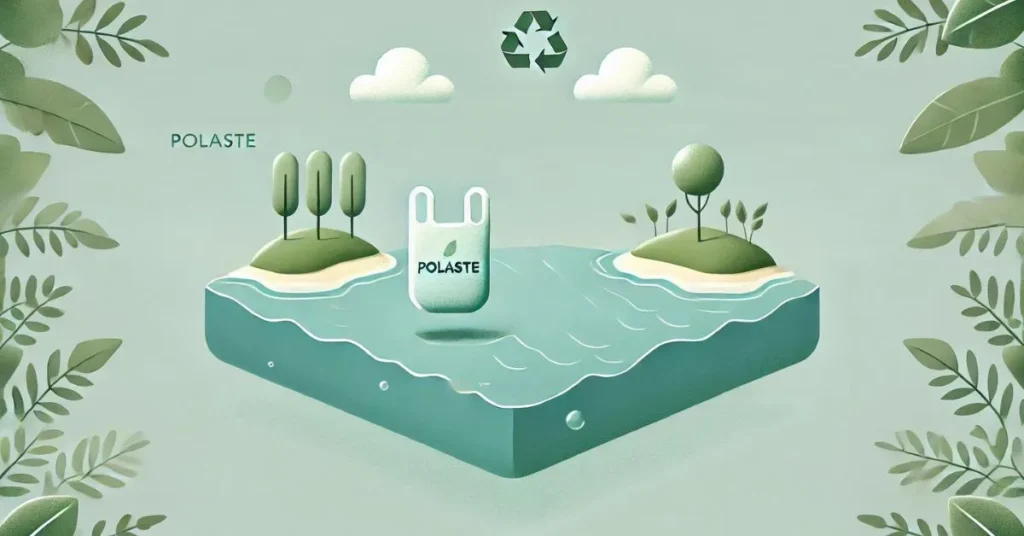Plastic pollution is a major global problem. Millions of tons of plastic end up in oceans and landfills every year. This has serious effects on wildlife and our environment.
Polaste is a new material that offers a sustainable alternative to traditional plastics. It is made from renewable resources, making it more eco-friendly. As the world looks for solutions to plastic waste, polaste could play a crucial role.
Many people are unaware of what polaste is and how it works. It is important to understand its properties and benefits. Polaste can help reduce our reliance on harmful plastics and promote a cleaner planet.
The environmental impact of traditional plastics is severe. They can take hundreds of years to decompose. This contributes to pollution and harm to ecosystems.
Polaste is designed to be biodegradable. It breaks down more quickly than regular plastic. This can help reduce the amount of waste in our landfills and oceans.
In this blog post, we will explore the many benefits of polaste. We will discuss its applications in various industries, including packaging and fashion. We will also look at recent innovations and how to incorporate polaste into everyday life.
What is Polaste?
Polaste is a new type of material. It is created from renewable resources. This makes it different from traditional plastics.
Polaste has unique properties. It is designed to be lightweight yet strong. This allows it to be used in various applications.
The history of polaste dates back to the need for sustainable alternatives. Scientists and engineers developed it as a response to plastic pollution. Today, polaste represents a promising solution for reducing waste.
How Polaste is Made
Polaste is produced using natural materials. This can include plant-based ingredients and other renewable resources. The production process aims to minimize environmental impact.
The manufacturing of polaste uses less energy than traditional plastics. This is a significant benefit for sustainability. By choosing polaste, industries can lower their carbon footprints.
Comparison to Other Materials
Polaste is often compared to conventional plastics. Traditional plastics can take hundreds of years to break down. In contrast, polaste is designed to be biodegradable.
Other sustainable materials, like bamboo and hemp, have their own advantages. However, polaste offers unique versatility in its applications. This makes it a strong contender in the market for eco-friendly materials.
The Environmental Impact of Traditional Plastics
Plastic pollution is a serious issue worldwide. Every year, millions of tons of plastic waste end up in oceans and landfills. This pollution harms wildlife and damages ecosystems.
Traditional plastics take a long time to decompose. Some can last for hundreds of years without breaking down. This contributes to the growing problem of plastic waste.
The production of conventional plastics also has a high carbon footprint. It involves fossil fuels, which release greenhouse gases. This adds to climate change and global warming.
Plastic waste can also harm human health. Chemicals from plastics can leach into soil and water. This can affect the food chain and human health over time.
The need for alternatives to traditional plastics has never been greater. As awareness of these issues grows, so does the demand for sustainable materials. Polaste offers a potential solution to reduce our reliance on harmful plastics.
Benefits of Polaste
Polaste offers many environmental benefits. It is designed to be biodegradable, breaking down more quickly than traditional plastics. This helps reduce waste in landfills and oceans.
Another advantage of polaste is its sustainability. It is made from renewable resources, which reduces dependence on fossil fuels. This makes it a greener choice for manufacturers and consumers alike.
Polaste also has a lower carbon footprint in its production process. This means that using polaste contributes less to climate change. Many companies are adopting polaste to improve their environmental impact.
Additionally, polaste is versatile. It can be used in a wide range of products, from packaging to consumer goods. This flexibility makes it an attractive option for various industries.
Using polaste can also promote awareness of sustainability. Consumers are becoming more conscious of their choices. By choosing products made from polaste, they can support eco-friendly practices.
Applications of Polaste
Polaste can be used in many different products. One of its main applications is in packaging. Companies are using polaste to create eco-friendly packaging solutions.
In the fashion industry, polaste is making waves. It can be used to make clothing and accessories. Many brands are exploring polaste to promote sustainable fashion.
Polaste is also beneficial in the construction sector. It can be used in building materials that are both strong and eco-friendly. This helps reduce the environmental impact of construction projects.
Another exciting application is in consumer goods. Polaste can be found in everyday items like containers and utensils. These products help consumers make more sustainable choices.
The versatility of polaste makes it a valuable material. As more industries adopt it, we can expect to see even more innovative uses. Polaste is paving the way for a more sustainable future.
Innovations and Developments
Recent research is uncovering new possibilities for polaste. Scientists are constantly looking for ways to improve its properties. This could make polaste even more effective as a sustainable material.
Innovative companies are experimenting with polaste in various products. For example, some are creating biodegradable packaging that decomposes quickly. This reduces waste and promotes a cleaner environment.
New technologies are also enhancing the production process of polaste. These advancements can lower costs and improve efficiency. As a result, more businesses may adopt polaste in their operations.
The future of polaste looks promising. As awareness of plastic pollution grows, the demand for sustainable materials will increase. Polaste is well-positioned to meet this need and drive positive change.
Collaboration among researchers, businesses, and consumers will play a key role. Together, they can explore new applications and encourage the use of polaste. This collective effort can lead to a more sustainable future for everyone.
How to Incorporate Polaste into Daily Life
Incorporating polaste into daily life is easier than you think. Start by choosing products made from polaste whenever possible. Look for eco-friendly packaging, clothing, and household items.
You can also support brands that use polaste in their products. Research companies committed to sustainability. By purchasing from them, you help promote environmentally friendly practices.
Consider DIY projects that utilize polaste materials. Create your own items using polaste, such as reusable bags or containers. This can be a fun way to contribute to sustainability.
Educating friends and family about polaste is also important. Share information on its benefits and applications. Encouraging others to make sustainable choices can amplify your impact.
Participate in community events focused on sustainability. Join local groups that promote eco-friendly living. Engaging with your community can inspire more people to consider polaste in their lives.
Challenges and Limitations
Despite its benefits, polaste faces challenges in the market. One major issue is market adoption. Many companies are still hesitant to switch from traditional plastics to polaste.
Cost is another factor that can limit its use. Polaste may be more expensive to produce than conventional plastics. This can make it less attractive for some manufacturers.
Recycling polaste presents its own challenges. While it is biodegradable, not all facilities are equipped to handle it properly. This can lead to confusion about how to dispose of polaste products.
Consumer awareness is also a limitation. Many people are still unaware of what polaste is and its benefits. Increased education and marketing are needed to promote understanding.
Finally, there is competition from other sustainable materials. Alternatives like bamboo and hemp are popular as well. Polaste must find its unique place in the market to thrive.
The Future of Polaste
The future of polaste looks bright and promising. As environmental concerns grow, the demand for sustainable materials is increasing. Polaste is well-positioned to meet this need.
Experts predict that polaste will become more widely accepted in various industries. Innovations in production and applications will continue to emerge. This can lead to more eco-friendly products on the market.
Consumers are also becoming more aware of their choices. Many people want to support sustainable brands and products. This shift in consumer behavior will drive the adoption of polaste.
Collaboration among businesses, researchers, and policymakers is crucial. Working together can create more opportunities for polaste. This can help establish it as a leading sustainable material.
Overall, polaste has the potential to make a significant impact. Its use can reduce plastic pollution and promote a cleaner environment. By embracing polaste, we can work towards a more sustainable future.
Conclusion
Polaste stands out as a promising alternative to traditional plastics. Its biodegradable nature and sustainable production methods make it a key player in the fight against plastic pollution. As awareness of environmental issues increases, polaste has the potential to reshape industries and consumer choices.
Understanding polaste is crucial for anyone committed to sustainability. By opting for products made from polaste, individuals can actively contribute to a healthier planet. Each choice supports eco-friendly practices and encourages businesses to prioritize sustainable materials.
The path to a sustainable future is a collective effort. It involves collaboration among consumers, businesses, and communities. Together, we can harness the potential of polaste and work towards a cleaner, greener world for generations to come.
FAQs
1. What is polaste?
Polaste is a new sustainable material made from renewable resources. It is designed to be biodegradable, offering an eco-friendly alternative to traditional plastics.
2. How does polaste differ from conventional plastics?
Unlike conventional plastics, which can take hundreds of years to decompose, polaste breaks down more quickly. It is made from natural materials, reducing its environmental impact.
3. What are the environmental benefits of polaste?
Polaste helps reduce plastic pollution by being biodegradable. Its production also uses less energy compared to traditional plastics, leading to a lower carbon footprint.
4. In what products can polaste be used?
Polaste can be used in a variety of applications, including packaging, clothing, accessories, and consumer goods like containers and utensils.
5. Is polaste recyclable?
While polaste is biodegradable, not all recycling facilities are equipped to handle it properly. It’s essential to check local recycling guidelines for specific disposal instructions.
6. How can I incorporate polaste into my daily life?
You can choose products made from polaste, support brands that use it, and engage in DIY projects utilizing polaste materials. Educating others about its benefits is also helpful.
7. What challenges does polaste face?
Polaste faces challenges such as market adoption, production costs, and limited consumer awareness. Increased education and marketing efforts are needed to promote its use.
8. What is the future of polaste?
The future of polaste looks promising as demand for sustainable materials grows. Ongoing innovations and increased consumer awareness will likely drive its adoption in various industries.







